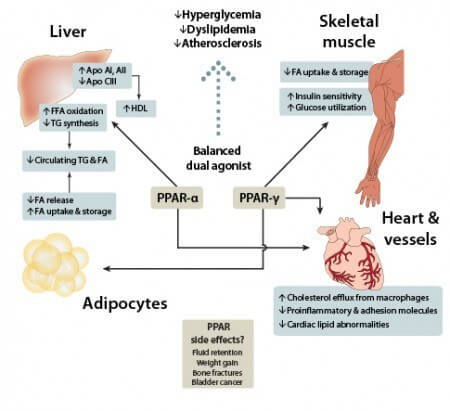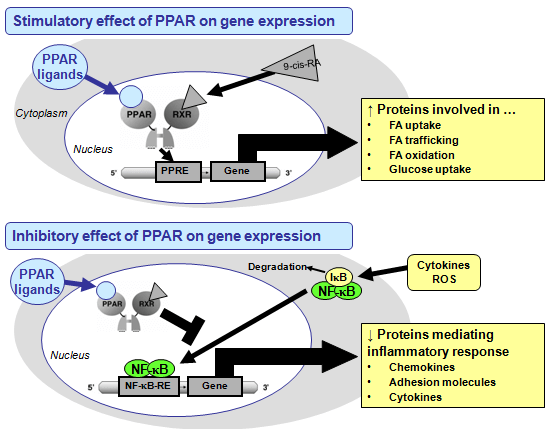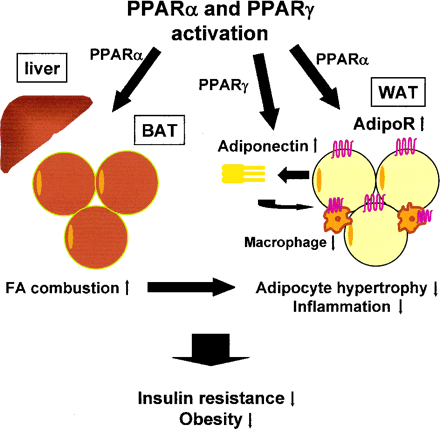PPAR-alpha & PPAR-gamma:
SNP’s:
Sterols:
Phytosterols (plant) e.g. mono/polyunsaturated fats PUFA’s
Cholesterols (animal) saturated fats
Example illustrations:



Resources:
- “…I do plan on diving in an doing short videos on specific SNPs, particularly ones related to fat metabolism since low-carb, high-fat and ketogenic diets have become popular. The PPAR-alpha SNP is one that is most concerning when it comes to ketogenic diets since that gene is essential for the process of ketogenesis. It is good that you measured a variety of blood biomarkers since that is really the only way to test whether a diet works for you. What you’re saying might suggest that a ketogenic diet may not work for you. At least that’s one way to interpret it. (Note: I don’t mean that as medical advice!) With respect to PPAR-alpha, other factors that can activate are polyunsaturated fatty acids particularly docosahexaenoic acid (DHA) and eicosapentaenoic acid (EPA), which are the fatty acids abundant in fish oil. DHA and EPA have been shown to be agonists for PPAR-genes. PPAR-alpha is under circadian regulation, so time-restricted eating may be even more important. If you really want to try a monounsaturated and polyunsaturated fat-based ketogenic diet see my comment to @brywatson. Of course, you would have to measure your blood biomarkers again to monitor how the diet affects those markers of health status. It would be appropriate to monitor these under the trained guidance of a physician. …” - Dr. Rhonda Patrick
- Check out Rhonda’s genetic tool, which pairs with the 23andMe genetic test
-
PPAR-alpha
- Predominantly found in the liver – involved in fatty acid catabolism and in the production of ketone bodies
-
PPAR-gamma
- Predominantly found in adipose tissue – involved in taking up free fatty acids into adipose tissue
-
Some people (Peter estimates 10-20% of people), do very badly on a ketogenic diet
-
Negative things that happen:
- Their LDL particle numbers go up , despite the fact that their triglyceride levels go down
- Levels of C-reactive protein (CRP) rise – this is a marker of inflammation
- Markers of cholesterol biosynthesis go up – their bodies are making more cholesterol
-
Their phytosterols go up (which typically go down on a ketogenic diet)
- Phytosterols are a group of naturally occurring compounds found in plant cell membranes.
- Cholesterol is the sterol from an animal
- Phytosterol is the cholesterol equivalent from a plant
- Note from Podcast Notes – This must mean their body has a harder time clearing phytosterols?
-
Peter had one patient, whom this happened to, here’s what he did:
-
He cut his patient’s saturated fat intake to very low levels (20-25 grams a day)
- 65% of his fat calories were being consumed from mono unsaturated fat (this is very hard to do, an easy way to get this much mono unsaturated fat is to consume lots of olive oil)
- After 8-12 weeks, with the same macronutrient distribution (so the same overall levels of protein, carbs, and fat – just with different types of fat – much less saturated fat) – their LDL particle number dropped tremendously, inflammation dropped, and their sterol biomarkers returned to normal
-
He cut his patient’s saturated fat intake to very low levels (20-25 grams a day)
-
Negative things that happen:
-
People with certain SNPs (pronounced snips – these are basically single gene variants) on PPAR alpha and PPAR gamma, just don’t do well with saturated fat, like Peter’s patient
- People with these SNPs, should have a higher ratio of poly and mono unsaturated fat to saturated fat inake, in order to lower their type 2 diabetes risk
- If they consume too much saturated fat, they’ll see effects similar to what was observed with Peter’s patient
- Why some people have trouble entering ketosis
- From an evolutionary perspective, you should have been selected out really quickly if you can’t make ketones efficiently
- It’s not all about generating ketones, first you have to deplete your glycogen (stored liver glucose) – once our body depletes its stored glucose, then it starts running on ketones …” …More



 for an hour.
for an hour.

